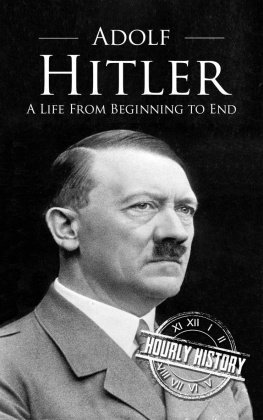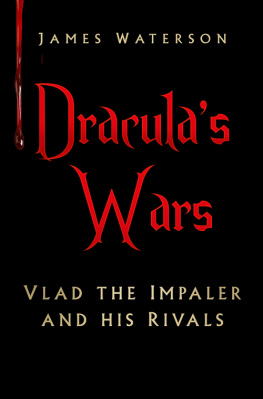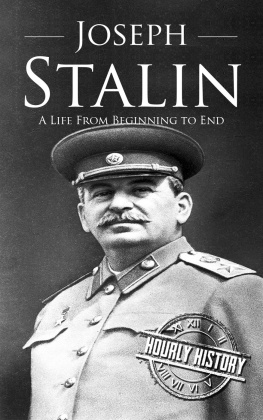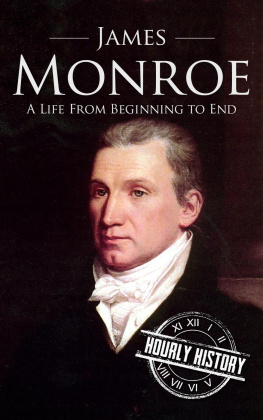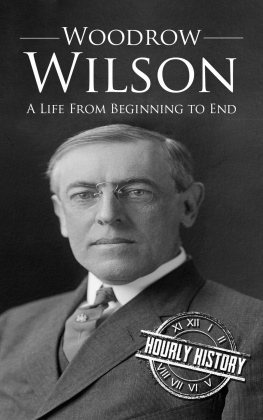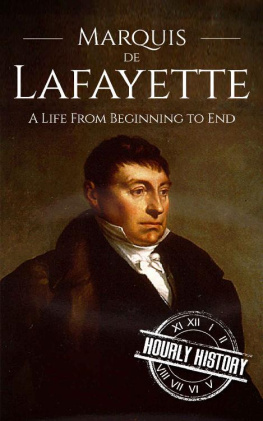Hourly History - Vlad the Impaler: A Life From Beginning to End
Here you can read online Hourly History - Vlad the Impaler: A Life From Beginning to End full text of the book (entire story) in english for free. Download pdf and epub, get meaning, cover and reviews about this ebook. year: 2016, publisher: Hourly History, genre: Non-fiction. Description of the work, (preface) as well as reviews are available. Best literature library LitArk.com created for fans of good reading and offers a wide selection of genres:
Romance novel
Science fiction
Adventure
Detective
Science
History
Home and family
Prose
Art
Politics
Computer
Non-fiction
Religion
Business
Children
Humor
Choose a favorite category and find really read worthwhile books. Enjoy immersion in the world of imagination, feel the emotions of the characters or learn something new for yourself, make an fascinating discovery.
- Book:Vlad the Impaler: A Life From Beginning to End
- Author:
- Publisher:Hourly History
- Genre:
- Year:2016
- Rating:5 / 5
- Favourites:Add to favourites
- Your mark:
- 100
- 1
- 2
- 3
- 4
- 5
Vlad the Impaler: A Life From Beginning to End: summary, description and annotation
We offer to read an annotation, description, summary or preface (depends on what the author of the book "Vlad the Impaler: A Life From Beginning to End" wrote himself). If you haven't found the necessary information about the book — write in the comments, we will try to find it.
Vlad the Impaler: A Life From Beginning to End — read online for free the complete book (whole text) full work
Below is the text of the book, divided by pages. System saving the place of the last page read, allows you to conveniently read the book "Vlad the Impaler: A Life From Beginning to End" online for free, without having to search again every time where you left off. Put a bookmark, and you can go to the page where you finished reading at any time.
Font size:
Interval:
Bookmark:
Copyright 2016 by Hourly History.
All rights reserved.
Movie lovers know the character well: a tall, dark, handsome man, dressed in a black cape, with a penetrating, seductive gaze. Women cant resist him and men cant best him. He is as alluring as he is lethal. He is Count Dracula, and he is world-renowned. Irish author Bram Stoker wrote the book Dracula in 1897, but where did Stoker get his inspiration? Is there any basis in fact to the story? Incredibly, in this case, the truth may, in fact, be stranger than fiction.
Stoker drew his inspiration, and the name Dracula, from Vlad III, Prince of Wallachia. Wallachia is a historical and geographical region of Romania situated to the north of the Danube River and south of the southern Carpathian mountain range. Vlad III wrote his name as Wladislaus Dragwyla, but his Romanian patronymic is also written variously as Dragkwlya, Dagulea, Dragolea, and Drculea. He was the son of Vlad II Dracul. Dracula, with the a on the end, is the diminutive form of Vlads fathers name. The name, Dracul, was given to Vlad II in 1431, the year of his infamous sons birth, upon his induction into the Order of the Dragon, a monarchical chivalric order established in 1408 by the King of Hungary, Sigismund, to protect Christianity in Eastern Europe. The word drac originally meant dragon, but in modern Romanian, it means devil.
Unlike his fictitious counterpart, who is often portrayed as tall and handsome, Vlad III Dracula was described as a short man who was stocky and strong. He was said to have a long, straight nose, a thin face, and green eyes with bushy, menacing eyebrows. He wore a mustache and had swollen temples that increased the bulk of his head. He also reportedly had a thick neck. His appearance, like his behavior, has also been described as cruel.
By most accounts, Vlad III Dracula, who was also known as Vlad epe which in Romanian means impaler, was born in Sighioara, a Voivodeship of Transylvania in what was then the Kingdom of Hungary, but today is part of Romania. He was born in the winter of 1431 in either November or December; the exact date is unknown. His main reign as Prince of Wallachia lasted from 1456 to 1462, a period which coincided with the Ottoman wars in Europe, and more specifically, with the conquest of the Balkans. He had ruled in 1448 after his Turkish allies attempted to install him as Prince, but that coup was short-lived, lasting only two months. He would also rule again beginning in November of 1476, but that too would last just a little over a month, at the end of which he is presumed to have died.
It was during the war with the Ottomans (Turkish Muslims) that Vlad III paradoxically earned both a reputation for cruelty, which gave rise to the moniker Vlad the Impaler, and his revered status as a folk hero for his protection of Romania and Hungary. The moniker Vlad the Impaler was bestowed upon him posthumously around 1550, although he was previously known as Kaziklu Beg or Kazili Voyvoda, both of which mean Impaler Lord. The name was so given by the Ottoman Empire after their soldiers came across what they described as forests of impaled victims. Impaling was his preferred method of execution. He is estimated to have killed somewhere between 40,000 and 100,000 people. He burned villages and fortresses to the ground and is said to have taken pleasure in torturing and killing his victims, even feasting amidst their remains. One German pamphlet written in 1521 describes how, among other grisly acts, he roasted children and fed them to their mothers. Such was his reputation in Western Europe. In eastern Europe, however, he fared much better.
Romanian and Bulgarian documents from 1481 onwards depict Vlad as a hero whose harsh but fair methods were justifiable, given that his motive was to reclaim his country. Additionally, his military efforts were all directed against the Ottoman Empire, which at the time was attempting to conquer Wallachia. Slavonic tales from the late 15 century and early 16 century describe him as hating evil in his country so much that he would kill anyone who attempted to harm it. Thus, he was seen as a folk hero in many areas of eastern Europe, though he was ultimately unsuccessful in repelling the Turkish invaders. The exact date and location of his death are not known, but he died at the age of 44-45 years old. He was buried by his rival, Basarab Laiota, without ceremony. The location of his burial is also not known, but it is possible it was at a monastery known as Comana, which was founded by Vlad in 1461. Several subsequent searches for his burial have failed to yield results, and of course, at least one tale would have it that he never died at all, but goes on to torture his victims as one of the undead. It is easy to see how the mysterious circumstances that surround his death, along with his taste for blood, could give rise to such a tale.
Most accounts cite Transylvania, the central region of Romania, as Vlad IIIs birthplace, but at least one expert argues he may have been born in Trgovite, which is located in the region of Wallachia. Florin Curta, a professor of medieval history and archaeology at the University of Florida, notes that Vlad III never owned anything in Transylvania, including the Bran Castle, which is often referred to as Draculas castle and has been depicted in the fictional accounts as such. By all accounts, he never even set foot there. Vlads father, however, did own a residence in Sighioara, Transylvania, but Curta argues it is not certain that the Wallachian prince was born there. He notes that Trgovite makes more sense as the site of Vlads birth, given that it was the royal seat of the principality of Wallachia at the time of his birth, and it is where his father was a voivode or ruler.
Who Vlads mother was is unknown. At the time of his birth, it is believed his father was married to Princess Cneajna of Moldavia, who was the eldest daughter of Alexander the Good, Prince of Moldavia. Vlad II, however, also kept a number of mistresses, and so it is possible one of them was Vlad IIIs mother. Vlad III had three siblings: two older half-brothers, Mircea II and Vlad Clugrul, and a younger brother, Radu III the Handsome. Vlad Clugruls mother was one of Vlad IIs mistresses, Caltuna, who later entered a monastery. Her son eventually followed in her footsteps and became Vlad the Monk. Vlad III Dracula would marry twice in his life and have at least three sons, one by his first wife whose name is unknown and who died in 1462, and two by his second wife, Ilona Szilgyi, a cousin of the King of Hungary. Some historians believe he also had a daughter named Maria with his second wife.
In the year of Vlads birth, his father was inducted into the knightly order known as the Order of the Dragon. Upon his induction, he was given a new surname: Dracul, derived from drac, which, at the time, meant dragon. In modern Romanian it means devil. His son, therefore, was given the name for the son of Dracul, which in old Romanian is Drculea. It is from this that the name Dracula is derived. The role of the Order of the Dragon was to protect Eastern Europe from the Ottoman invaders. It was established in 1408 by Sigismund, then King of Hungary, but who would later become Holy Roman Emperor (1433-1437). The order required its initiates to defend Christianity, particularly from the Ottoman Empire. It was modeled after the military orders of the Crusades, and it flourished during the first half of the 1400s. Sigismund died in 1437, and after that, the importance of the order declined in western Europe, though it continued to play a role in Hungary, Croatia, Wallachia, and Serbia, locations which were, at that time, the target of Ottoman incursions.
Font size:
Interval:
Bookmark:
Similar books «Vlad the Impaler: A Life From Beginning to End»
Look at similar books to Vlad the Impaler: A Life From Beginning to End. We have selected literature similar in name and meaning in the hope of providing readers with more options to find new, interesting, not yet read works.
Discussion, reviews of the book Vlad the Impaler: A Life From Beginning to End and just readers' own opinions. Leave your comments, write what you think about the work, its meaning or the main characters. Specify what exactly you liked and what you didn't like, and why you think so.




